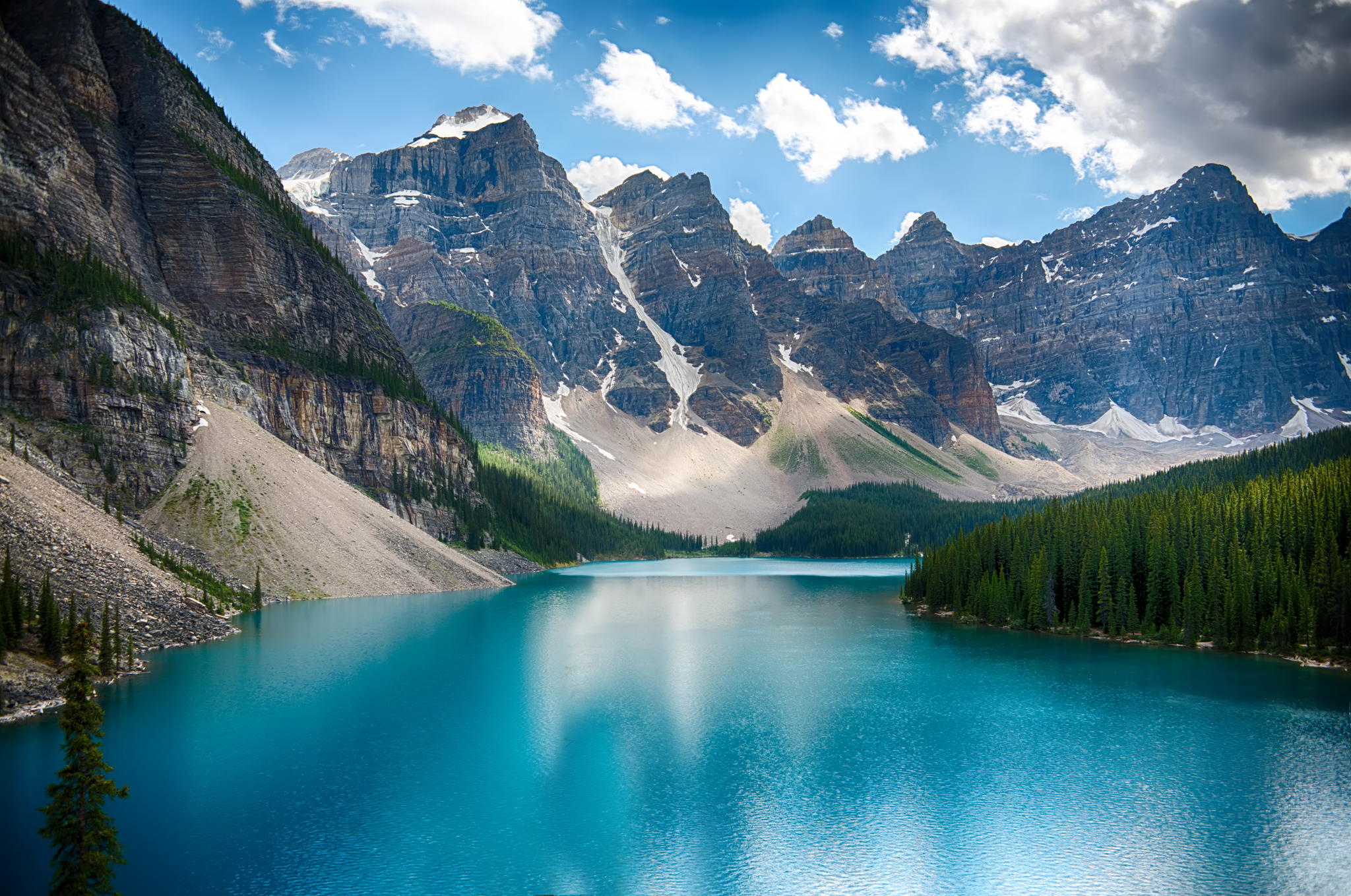Canada has 48 national parks and one national urban park. They were created and are run by the federal government. The national parks cover a vast amount of land — about 340,000 km2. This is about 3 per cent of Canada’s landmass. National parks serve two purposes. The first purpose is to preserve and protect nature. The second purpose is to give Canadians the chance to enjoy some of the country’s most beautiful and important natural settings. Millions of Canadians visit national parks every year.
(This article is a plain-language summary of National Parks. If you are interested in reading about this topic in more depth, please see our full-length entry, National Parks of Canada.)

History
The federal government created the first national park in 1887. It became Banff National Park. The major attractions of Banff at the time were its mountains and hot springs. Another reason why it was created was to help the Canadian Pacific Railway. The federal government hoped that Banff would attract tourists. These tourists would have to take the CPR to get to Banff. The federal government’s plan succeeded. Banff became a popular spot for tourists. The CPR and Canadian tourists benefitted greatly from the creation of Banff. Indigenous peoples did not. They were banned from entering Banff. The federal government did not want them to live or hunt on its grounds. Indigenous peoples were banned from numerous other national parks as well. They had lived on these lands for thousands of years.
Growth of the Parks System
The success of Banff compelled the federal government and the CPR to create more national parks. From 1887 to 1895, the federal government set aside land in British Columbia and Alberta for future national parks. They became the sites of Yoho, Glacier and Waterton Lakes national parks. From 1911 until 1936, many more parks were created. Some of these parks were: Elk Island, Kootenay, Georgian Bay Islands, and Cape Breton Highlands. Thousands of tourists visited these parks every year. This was a sure sign that the national park system would continue to be successful. By 1970 there were 20 national parks. Two years earlier, Jean Chrétien, the minister responsible for the national parks, said that he wanted Canada to have 40 more national parks by 1985. He did not reach this goal. However, many more parks have been founded since then.
Preserving Canada’s National Parks and the Future
Today, the federal government discusses its plans with Indigenous peoples before creating a new park. This is very different from its policy in the past. The federal government also consults with industry. Some national parks are located on or near mineral rich land. So, industries have developed around the national parks. The government and industry try to work together. They do so in the hope that they can both get what they desire. The main desire of the government is to preserve the national parks. It is important to preserve the areas around the parks too because much wildlife live there. If they are negatively affected the parks are negatively affected too. The government also works with environmentalists. They both want to make sure that the parks are protected. Protecting the parks ensures that people can continue to enjoy visiting them. They are some of the most popular tourist sites in the country. They give people an opportunity to see and stay in some of the most beautiful places in Canada.

 Share on Facebook
Share on Facebook Share on X
Share on X Share by Email
Share by Email Share on Google Classroom
Share on Google Classroom



